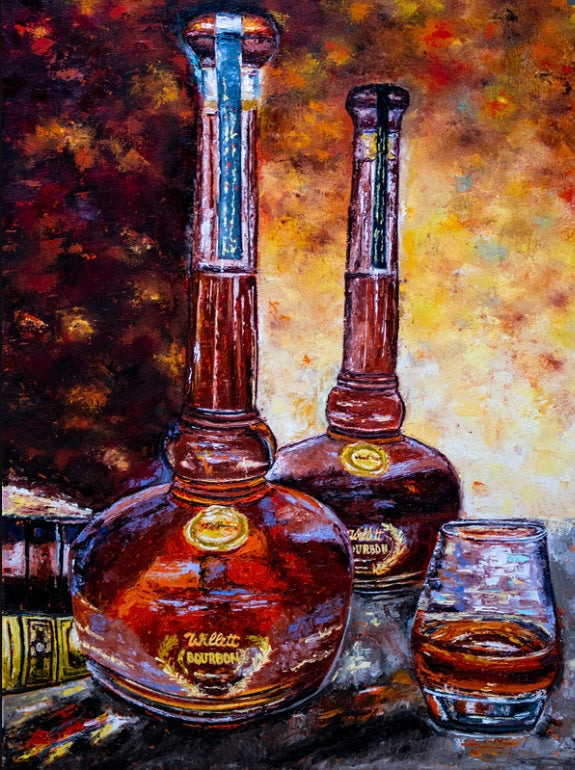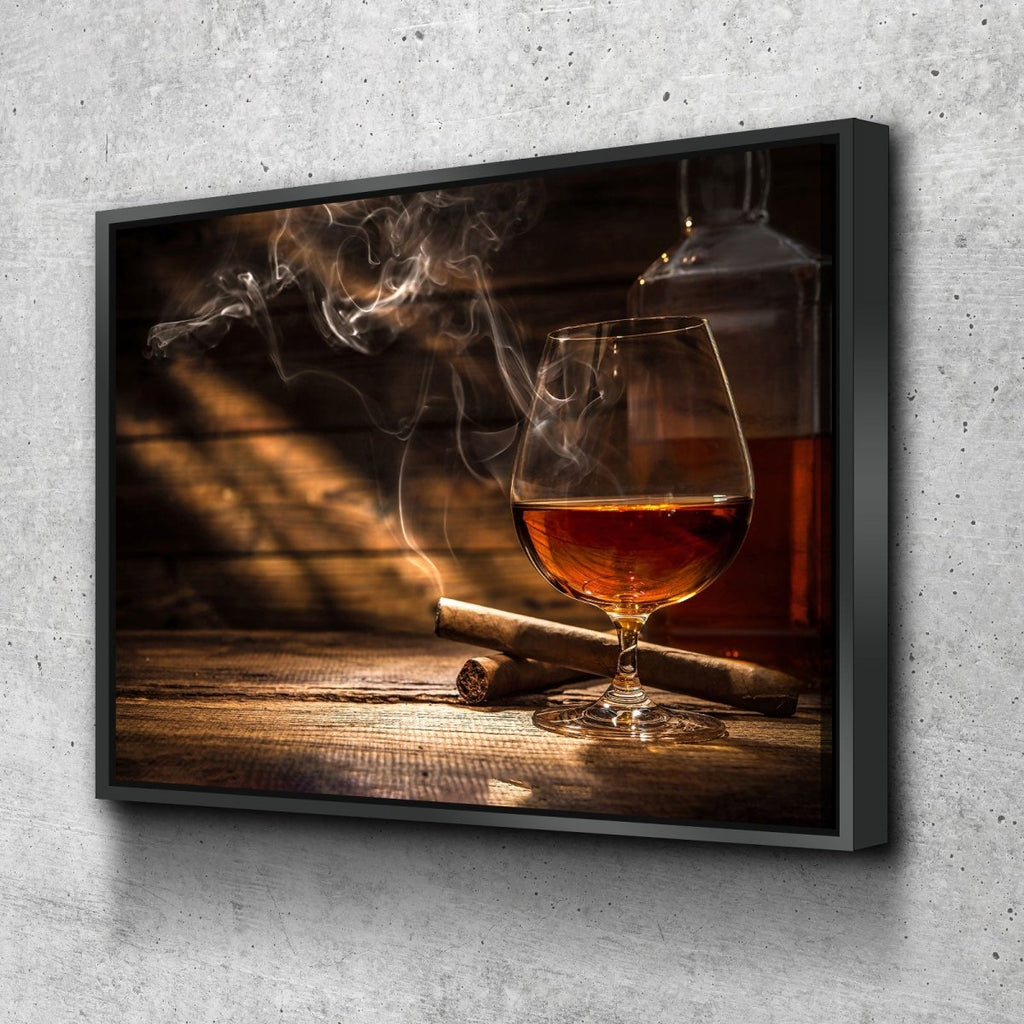The Relevance of Whiskey Art in Celebrating Heritage and Craftsmanship in the Beverage Industry
The detailed relationship in between scotch art and the celebration of heritage and craftsmanship within the beverage sector can not be overstated. Via attentively made bottles and labels, bourbon brands encapsulate their historical roots and the artisanal abilities that specify their manufacturing techniques. This artistic dimension not only enhances market appeal but likewise acts as a conduit for cultural narration, promoting a deeper link between the consumer and the craft. As we discover the numerous elements of this subject, fascinating questions about the effect of modern-day patterns on standard methods arise, prompting more evaluation.
The Historic Origins of Whiskey
At the heart of scotch's allure exists an abundant tapestry of historical origins that map back to old worlds. The origins of bourbon can be linked to the distillation practices of the Sumerians and Babylonians around 2000 BCE, where early types of fermented grain drinks began to emerge. Nevertheless, it was in the Middle Ages that the art of distillation evolved significantly, specifically in Ireland and Scotland, resulting in the creation of scotch as we understand it today.
The term "bourbon" itself obtains from the Gaelic word "uisce beatha," implying "water of life." This expression emphasizes the social importance of bourbon in Celtic cultures, where it was commonly related to rituals, parties, and common bonding. By the 15th century, purification became an identified craft within monastic neighborhoods, leading the way for the facility of lawful distilleries.
As profession paths increased, whiskey's appeal grew, transcending regional limits and catching the rate of interest of aficionados worldwide. Whiskey Art. This historical trip reflects not just the workmanship behind bourbon production but likewise its essential function in social and cultural contexts, marking it as a considerable beverage throughout background
Artistic Expression in Branding
Whiskey branding stands as an engaging intersection of virtuosity and commerce, where visual identity plays a vital function fit consumer perception. The aesthetic appeals of scotch tags, product packaging, and advertising and marketing materials reflect not only the brand name's tale however also its core values and heritage. Through creative expression, distilleries communicate a narrative that reverberates with consumers, evoking emotions and triggering links.
The usage of shade, typography, and imagery in branding serves to separate items in a saturated market. Standard themes may evoke a sense of authenticity and workmanship, while contemporary layouts can represent technology and forward-thinking. This tactical artistic instructions boosts brand recognition and loyalty, enabling consumers to create a personal partnership with the whiskey they pick.
Furthermore, artistic expression in branding frequently functions as a celebration of local heritage. Distilleries regularly include local icons or historical recommendations right into their designs, producing a local color that invites consumers to participate in a broader cultural experience. Eventually, the virtuosity behind bourbon branding not only enhances visual charm however also improves the general narrative of the brand, fostering a much deeper gratitude for the workmanship and heritage embedded in each container.
Craftsmanship in Bottle Style
The creativity apparent in bourbon branding prolongs beyond aesthetic identification to encompass the workmanship associated with bottle style. Each bottle functions as a vessel not simply for the spirit within, but additionally for the story it outlines its high quality, beginning, and custom. The layout procedure needs meticulous interest to information, as elements such as closure, form, and material add dramatically to the total assumption of the scotch.
Craftsmanship in container layout entails selecting high-grade glass that can improve the scotch's color and quality, while additionally giving a responsive experience for the consumer. The silhouette of the container need to be both useful and visually enticing, frequently showing the heritage of the brand. Lots of distilleries select one-of-a-kind forms or embossed logos that stimulate a feeling of credibility and background.
Furthermore, the tag style and typography play an important role in connecting the brand's story. Whiskey Art. A well-crafted bottle not only astounds the customer's eye but likewise enhances the brand's dedication to top quality and custom. This way, the craftsmanship of container design ends up being an important element of the scotch experience, combining creativity with a profound regard for heritage
Cultural Value of Bourbon Art
Commemorating custom and workmanship, the cultural value of whiskey art transcends mere aesthetics, intertwining with the social and historical narratives of the regions from which it stems. Each container works as a canvas, portraying the distinct tales, mythology, and traditions that have actually shaped local whiskey-making techniques. The complex designs frequently reflect the heritage of the distillers, integrating icons and concepts that resonate with the culture and worths of their communities.

Additionally, whiskey art plays a vital Limited Edition role in communal celebrations and parties, working as a concrete link in between individuals and their shared experiences. By valuing the virtuosity in bourbon packaging, consumers cultivate a much deeper understanding and regard for the craft, eventually enhancing their satisfaction of the beverage itself.
Modern Trends in Whiskey Presentation
Recently, the presentation of whiskey has actually evolved to reflect contemporary tastes and trends while still honoring typical craftsmanship - Whiskey Art. Distilleries are significantly concentrating on visual aspects that boost the total alcohol consumption experience, bridging the space in between heritage and modernity
Cutting-edge bottle styles have emerged, commonly integrating sustainable materials and artistic labels that tell compelling stories. Many brands currently collaborate with regional artists, infusing their items with one-of-a-kind aesthetic expressions that reverberate with customers. Additionally, limited-edition launches are often packaged in collectible containers, adding worth and appeal for aficionados.

Verdict
In verdict, bourbon art offers as an essential avenue for sharing the heritage and craftsmanship inherent in the drink sector. Via complex branding, innovative bottle layouts, and culturally substantial imaginative elements, scotch brands efficiently honor their practices and connect with consumers.


Craftsmanship in bottle style entails choosing high-quality glass that can improve the scotch's color and clearness, while also offering a responsive experience for the customer. In this means, the craftsmanship of bottle style ends up being an essential aspect of the whiskey experience, merging creativity with an extensive regard for heritage.
In verdict, bourbon art offers as an essential conduit for revealing the heritage and workmanship intrinsic in the beverage industry.